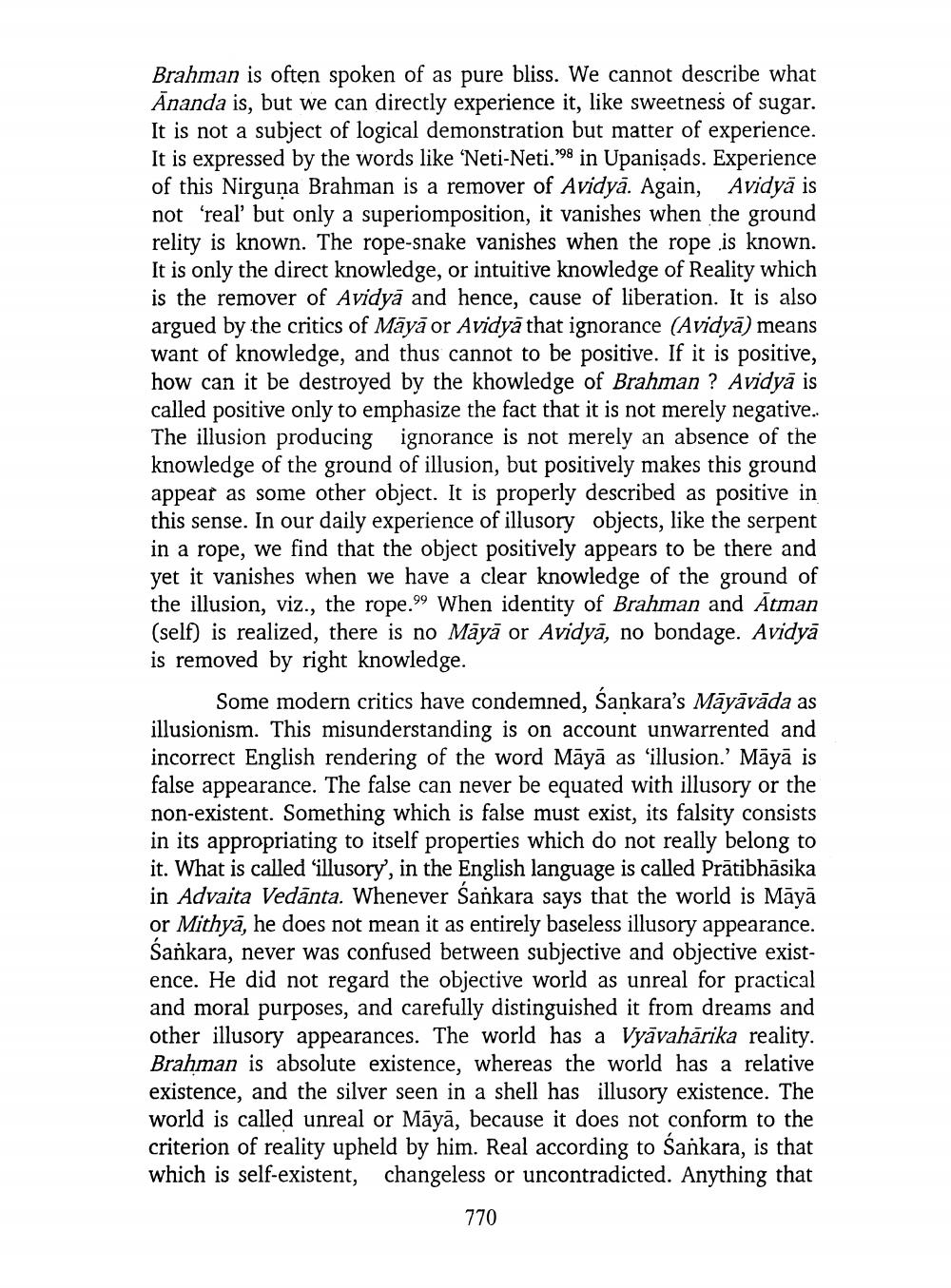________________
Brahman is often spoken of as pure bliss. We cannot describe what Ananda is, but we can directly experience it, like sweetness of sugar. It is not a subject of logical demonstration but matter of experience. It is expressed by the words like 'Neti-Neti.'98 in Upanisads. Experience of this Nirguna Brahman is a remover of Avidya. Again, Avidya is not 'real' but only a superiomposition, it vanishes when the ground relity is known. The rope-snake vanishes when the rope is known. It is only the direct knowledge, or intuitive knowledge of Reality which is the remover of Avidya and hence, cause of liberation. It is also argued by the critics of Maya or Avidya that ignorance (Avidya) means want of knowledge, and thus cannot to be positive. If it is positive, how can it be destroyed by the khowledge of Brahman? Avidya is called positive only to emphasize the fact that it is not merely negative.. The illusion producing ignorance is not merely an absence of the knowledge of the ground of illusion, but positively makes this ground appear as some other object. It is properly described as positive in this sense. In our daily experience of illusory objects, like the serpent in a rope, we find that the object positively appears to be there and yet it vanishes when we have a clear knowledge of the ground of the illusion, viz., the rope.99 When identity of Brahman and Atman. (self) is realized, there is no Māyā or Avidya, no bondage. Avidya is removed by right knowledge.
Some modern critics have condemned, Śaṇkara's Māyāvāda as illusionism. This misunderstanding is on account unwarrented and incorrect English rendering of the word Māyā as 'illusion.' Māyā is false appearance. The false can never be equated with illusory or the non-existent. Something which is false must exist, its falsity consists in its appropriating to itself properties which do not really belong to it. What is called 'illusory', in the English language is called Pratibhāsika in Advaita Vedānta. Whenever Śankara says that the world is Māyā or Mithya, he does not mean it as entirely baseless illusory appearance. Śankara, never was confused between subjective and objective existence. He did not regard the objective world as unreal for practical and moral purposes, and carefully distinguished it from dreams and other illusory appearances. The world has a Vyāvahārika reality. Brahman is absolute existence, whereas the world has a relative existence, and the silver seen in a shell has illusory existence. The world is called unreal or Māyā, because it does not conform to the criterion of reality upheld by him. Real according to Sankara, is that which is self-existent, changeless or uncontradicted. Anything that
770




